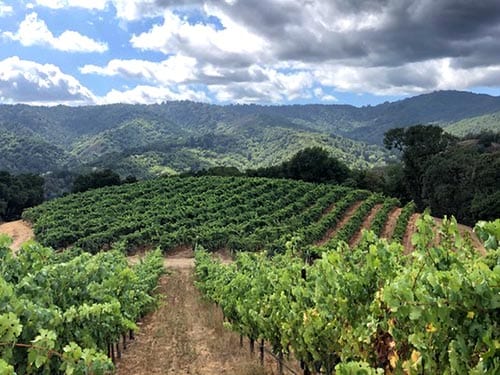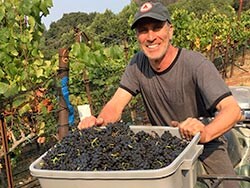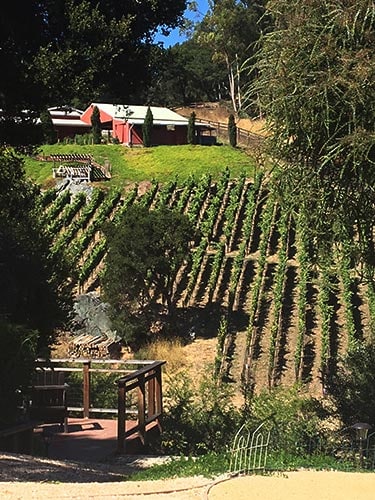Why Do So Many MDs Love Making Wine?
Wine isn’t what it used to be.
Oh, it still comes in colors. All those grapes are still crushed — some as we speak — and it still brings wonders to the palate and dinner table and moments both quiet and raucous.
But the research has shifted. It wasn’t long ago that a glass or two of wine a day was thought to be good for the heart and even inspired physicians to gather and spread the word about the benefits of moderate consumption.
Now it’s widely accepted that there is no healthy dose of wine. The American Heart Association, for example, “does not recommend drinking wine or any other form of alcohol to gain potential health benefits” (and it’s not so good for the brain, either).
That shift makes for some interesting tension, because a lot of doctors still love making wine.
As far as hobbies and side gigs go, it’s not surprising that winemaking attracts its share of physicians. But does it matter that the finished product no longer enjoys the healthy reputation it once did? Not really — probably because the most common reasons doctors embrace the grape had nothing to do with those specific health benefits in the first place. In fact, some don’t even drink their own wine — or any alcohol.
Science, craft, precision, discipline, discovery, problem-solving, pursuit of excellence — perhaps these traits sound familiar to physicians. And how about doing it for your own mental well-being?
“I find winemaking to be profoundly interesting and an almost divine experience as it is a combination of science and art,” says Simon Ourian, MD, a cosmetic dermatologist in southern California who also runs his Ourian Family Vineyard.
Here’s how some physicians recently joined the winemaking ranks — and are loving every minute of it.
Both a Science and an Art
Ourian initially got into the business to honor his winemaking ancestors and loves the process of turning grapes into something elevated.
“I have to start by confessing that I don’t drink wine or any other type of alcohol,” he admits. Creating wine, he says, involves a deep understanding of the transformative reactions that take place during fermentation and aging, as well as the knowledge of how to select and blend different grape varieties for a desired flavor profile.
The science being the craft, says Ourian, is the most interesting part of the process: “It allows me to combine my love of experimentation and problem-solving with my passion for winemaking.” Call it a delicate balance of chemistry, biology, and art.
“Understanding how the grapes react to different conditions, how different strains of yeast affect the fermentation process, and how aging changes the wine over time is fascinating,” Ourian explains. He enjoys experimenting with techniques and methods, as well as the continuous learning, which keeps his brain engaged.
Retired pathologist Norberto (Tito) Cartagena, MD, and his wife run a winery at Quinta da Brisa, a property in the Algarve region of Portugal. Cartagena says that medicine and winemaking are not that dissimilar. In one, you tend to the needs of human life; in the other, the needs of plant life.
“Life, as we know it, in reality, only exists in one form: the cell,” he explains. “Hence, many of the principles of diagnosis and treatment are remarkably similar, and I was able to easily apply these principles of medicine to farming.” He prides himself on using biodynamic influences, avoiding the downsides of industrial farming like pesticides and chemical-fertilizers and finding the best natural techniques for his wine, which he makes purely for family and friends to enjoy.
How to Start a Winemaking Journey
In 2018, Recha Bergstrom, MD, a radiologist in Palo Alto, California, started a winery with her husband in the Santa Cruz mountains. “I had no business or winery experience,” she says. “What I did have was discipline, structure, interest, and an ability to learn.”
Calling on her medical background to help her “understand complex systems requiring careful adherence to compliance protocols,” she credits the characteristics that helped her get through medical school as the same ones that helped get her wine business up and running.

The Sandar and Hem Winery in the Santa Cruz mountains of California
is owned by radiologist Dr Recha Bergstrom and her husband Robert.
Some physicians have caught the winemaking bug earlier in life. After college and before attending medical school, John Bry, MD, a vascular surgeon in Berkeley, California, joined a winemaking group of researchers at the University of California. The fire was lit, and in 2002, he purchased a hilltop horse property outside San Francisco and began learning to make wine.
“I had a novice wine palate and was mostly delighted to have the space and what little extra time I had to explore a new and much bigger project than I ever had before,” he says.

Dr John Bry
Bry sought out experienced experts in the industry to serve as mentors, and his passion project became Perfusion Vineyard. But the process took time (and let’s be honest, money). It was only after securing a vineyard manager, clearing the property, a major drainage project, and gathering soil and weather data, that Bry could set out on his organic pinot noir adventure.

Perfusion Vineyard, located just outside San Francisco,
is owned by vascular surgeon John Bry.
For Ourian, a vineyard grew out of his own backyard. When he purchased his Southern California home in 2008, his father declared that the property would be perfect for growing grapes. After his dad passed away, Ourian decided to turn his backyard hill into a micro vineyard as a tribute.
“I began by researching the best practices for vineyard management and selecting the appropriate grape vines for the soil and climate conditions in my area,” says Ourian. Next, he had a soil analysis done and installed a trellis and irrigation system. Ourian planted the vines and learned everything he could about pruning, harvesting, and winemaking. “I had to learn how to deal with pests, diseases and weather conditions that affected my vineyard,” Ourian reveals, calling the process “challenging.”
It’s never too late to begin. Cartagena and his wife moved to their small farm in Portugal after retirement. “Wild grape vines sprouted in various areas of the farmland we had acquired, so it seemed only natural to plant wine grapes and see what happens,” he recalls. Grape vines don’t produce a harvest for the first three years. On the fourth year, the Cartagenas connected with a neighbor who makes wine for his restaurant, and his enologist made their first vintage. “The wine was surprisingly good, so we embarked on the project of making our own wine the next year,” he says.
The Work–Wine Balance
For Ourian, winemaking serves as a form of balance to his career in medicine. “It is a practice that allows me to step away from the logical and analytical approach that is required in my profession and connect with the raw and visceral aspects of life,” he says. He loves the rewards of seeing the grapes growing, the wine he made from them, and the joy of giving it to friends and family. “It makes the hard work worth it.”

Recha and Robert Bergstrom
Bergstrom also finds owning a winery to be a respite from the stresses of practicing medicine. “It requires lots of hands-on work, and those hours in the vineyard are very therapeutic for me,” she says. She watches the sun rise on cold mornings while picking grapes, tasting the fruit for the right sweetness and tartness. Each step of the winemaking process brings moments of beauty and social connection.
Bry appreciates the slower pace that winemaking offers him outside of working in a busy surgical practice. “Similar to patient care, one can only devote full attention to one patient or to one vine at a time,” he says. Winemaking and medicine, he adds, both involve untiring attention to detail — the happy difference being there are no consequences if you make a mistake with your cabernet.
Perhaps Some Anecdotal Evidence of Health Benefits…?
Bergstrom sees one important benefit for herself at least: sipping the fruits of her labor allows her the chance to “slow down and relax.”
“Tasting the wine with people can be a very mindful experience,” she says. “You slow down, use your senses and really pay attention to the moment and what you are experiencing. You look, smell, taste and pay attention every step of the way while enjoying the wine. And it’s in those moments, in that mindset, that you get to really connect with people.”
For more news, follow Medscape on Facebook, X (formerly Twitter), Instagram, YouTube, and LinkedIn
Source: Read Full Article
